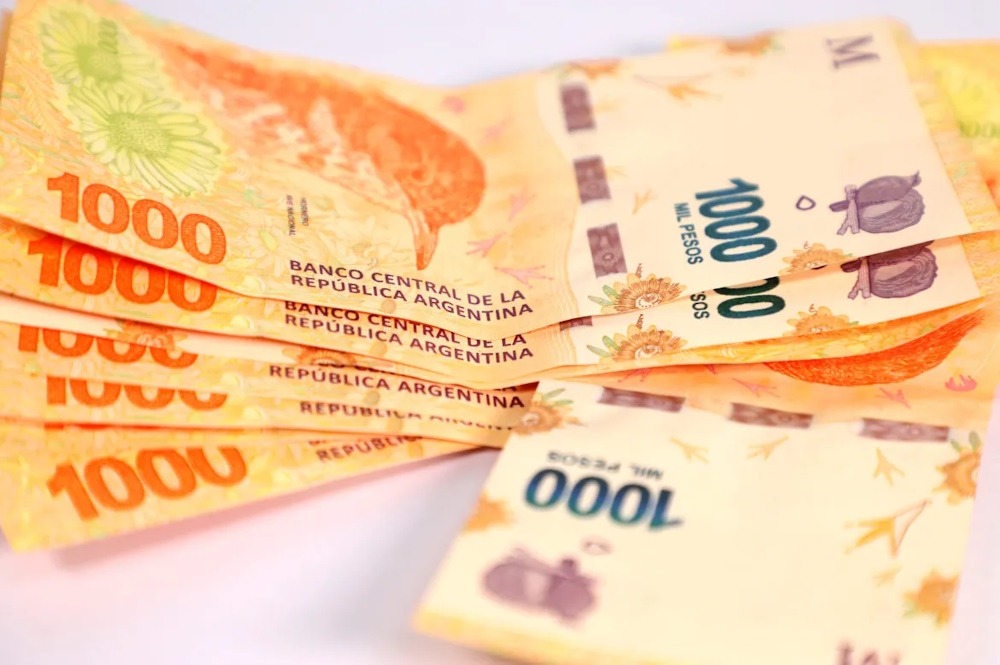The economic team of the President conveys a clear message to the market regarding its firm control over Argentina’s money supply, which is essential for combating inflation, stabilizing the peso, and maintaining his elevated approval ratings. Investors in Argentina have started to foresee a nuanced shift in policy as President Javier Milei appears to relax his grip on the circulation of pesos within the economy, reflecting a delicate balance between inflation and economic growth in the lead-up to the October midterm elections.
Prior to an unforeseen debt auction on Wednesday, Milei’s economic team communicated to the market late Tuesday that it maintains a firm control over Argentina’s money supply, a crucial factor in combating inflation, stabilizing the peso, and sustaining Milei’s elevated approval ratings. “The priority always was, is and will be that there isn’t an excess of pesos, as a way of consolidating the disinflation process we’re going through,” Economy Minister Luis Caputo posted on X late Tuesday, adding the Central Bank had absorbed five trillion pesos of liquidity in three trading sessions. This episode commenced last week when, in a bid to enhance its balance sheet, Argentina’s Central Bank ceased the rollover of approximately 15 trillion pesos in short-term notes known as LEFIs. The debt had been previously offered to banks as a means to absorb the excess liquidity that Milei inherited from his predecessors.
As banks sought optimal placements for their pesos, the demand for alternative instruments increased significantly, resulting in a decline of the one-month yield on Treasury notes known as Lecaps – now regarded as the new benchmark for Argentina’s monetary policy – from 35 percent to 30 percent during the same timeframe. Argentina’s Treasury conducted a sale of notes totaling 8.5 trillion pesos last week, a figure that fell short of the amount of LEFIs that matured during the same period. “The market was left awash in pesos,” stated Marcos Buscaglia, director of consulting firm Alberdi Partners, in a report to investors on Monday. “It likely also contributed to the decline in the value of the peso relative to the dollar.”
The peso has depreciated by approximately 4.6 percent this month relative to the dollar, marking the most significant decline among emerging markets, as investors anticipate that the transition from LEFIs to Lecaps will ultimately lead to an increase in the money supply. The Central Bank has not yet released monetary base figures following the conclusion of the LEFIs. The government plans to conduct an unscheduled sale of additional Treasury notes on Wednesday to capitalize on the surplus pesos available in the market.
In light of the recent uptick in liquidity, analysts have posited – a notion later corroborated by Caputo – that the Central Bank aimed to rein in this monetary expansion by Tuesday. “While the financial system may see some relief, the Central Bank appeared to send a signal to markets that – contrary to earlier expectations – it will not loosen its monetary grip,” Joaquín Bagues, managing director at Buenos Aires-based Grit Capital Group, stated in a phone interview. Milei’s capacity to manage Argentina’s monetary base has effectively curtailed inflation, with annual price increases declining to a four-year low of 39 percent in June, down from a peak of nearly 290 percent in April 2024. Nonetheless, insufficient liquidity has constrained bank lending, which is essential for fostering an economic recovery.
Argentine financial markets are increasingly apprehensive regarding the delicate equilibrium between curbing inflation and fostering growth, as analysts highlight the implications for the monetary base stemming from the unwinding of central bank debt alongside a rapid decline in interest rates. “We’re seeing a sharp increase in the monetary base that isn’t justified by any rise in money demand,” stated Emiliano Merenda, chief executive officer and partner at Pharos Capital in Buenos Aires. “In a span of fewer than three months, two significant decisions – the allocation of Central Bank profits to the Treasury and the reversal of the LEFIs – have resulted in an almost twofold increase in the broad monetary base.”
The timing introduces an additional layer of complexity. In Argentina, the availability of dollars typically diminishes in the third quarter, coinciding with the conclusion of the agricultural harvest, which serves as the primary source of hard currency. Concurrently, the political uncertainty surrounding upcoming elections is driving demand for the dollar as a protective measure. The outbound tourism during the winter holidays in South America is exerting pressure on reserves.
Argentina’s economy is experiencing the repercussions of a constrained money supply. Interest rates, when adjusted for inflation, which once reached as high as 30 percentage points, have effectively curtailed credit availability, dampened consumer spending, and placed significant strain on corporate payment networks. In the interim, the overvaluation of the peso has adversely impacted exporters by diminishing their competitiveness and profit margins. Argentina recorded a trade surplus of US$1.9 billion in the initial five months of 2025, reflecting a decline of 79 percent compared to the previous year. Construction activity experienced a contraction in May, marking the third decline in five months, while retail sales continue to show significant weakness.
The recent, albeit brief, influx of liquidity could provide some short-term relief; however, it also poses the risk of reigniting inflation to a certain degree. Nonetheless, analysts do not foresee price increases comparable to those experienced at the outset of Milei’s administration. Some observers interpret the policy change as a calculated strategy aimed at stimulating growth in anticipation of upcoming elections, prioritizing pragmatic considerations over stringent monetary policy. “The government is recalibrating – relaxing monetary policy marginally and accepting somewhat higher inflation in pursuit of balance,” stated Federico Filippini, chief economist at Adcap, in a report to investors. “The new mix reflects, among other factors, the necessity to inject liquidity into the financial system.”

